Introduction to Dump Truck Trailers
In the world of heavy-duty trucks, the terminology can often become a tangled web for those not immersed in the industry. A dump truck, a staple of construction and mining, has its own nuanced structure, replete with specific components. One of the most misunderstood aspects is the back trailer, often essential for its operational capability. This article seeks to elucidate what the back trailer of a dump truck is called, along with its functions, types, and relevance in various applications.
What is the Back Trailer of a Dump Truck?
The back trailer in question is commonly referred to as the dump trailer. It is the component that allows for the transportation and unloading of bulk materials such as gravel, sand, or soil. This trailer collaborates with the truck’s hydraulic system, enabling the dumping mechanism that is fundamental to its operation.
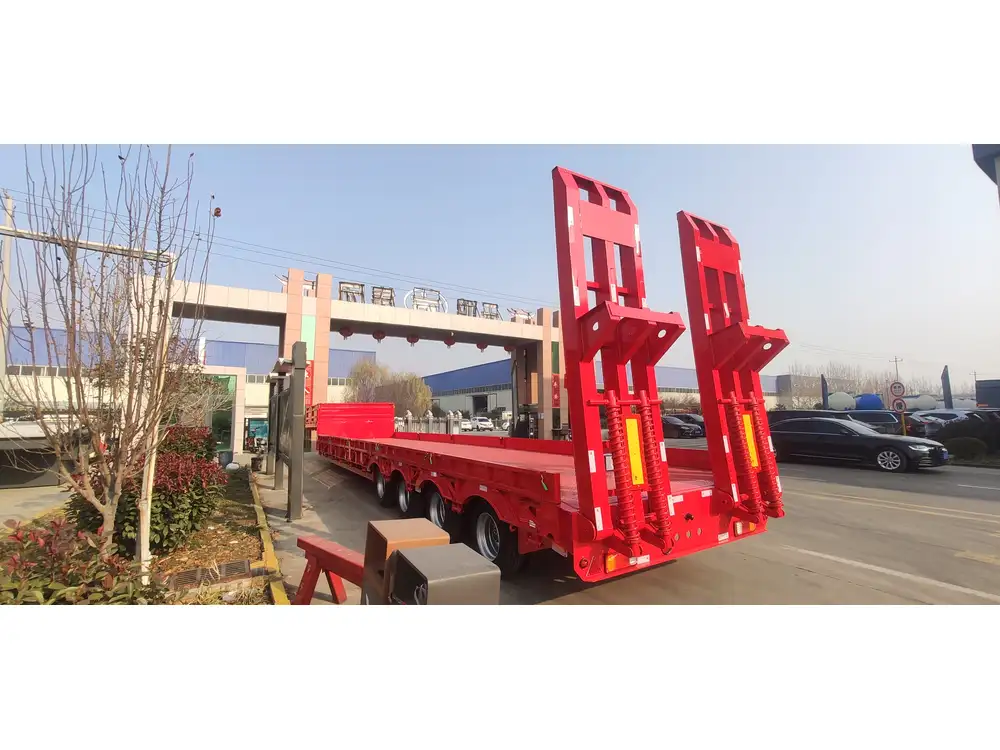
Distinguishing Features of a Dump Trailer
| Feature | Description |
|---|---|
| Load Capacity | Ranges from 5 to 20 tons, depending on the size and construction of the trailer. |
| Materials Used | Typically constructed from high-strength steel or aluminum to withstand heavy loads. |
| Dump Mechanism | Utilizes hydraulic cylinders to lift the trailer bed, allowing for efficient unloading. |
| Axles | Usually equipped with two to four axles, contributing to stability and load distribution. |
| Braking System | Features air brakes or electric brakes for enhanced safety during towing. |
Types of Dump Trailers
1. Standard Dump Trailers
Standard dump trailers are equipped with a hydraulic lift system that raises the bed (the dumping mechanism) for effective unloading. These are ideal for carrying heavy and bulk materials over short distances.

2. Semi-Trailers
Semi-dump trailers are designed to be pulled by a semi-truck. They are longer, can carry more load, and are often utilized for larger industrial projects.
3. Bottom Dump Trailers
Uniquely designed, these trailers discharge their load from the bottom, providing excellent control over the material distribution. They are favored for road construction and rebuilding projects where precise placement is critical.
4. End Dump Trailers
These trailers dump their load from the rear, allowing for quick unloading in confined spaces. They are commonly used in construction sites with limited maneuvering room.

How Does a Dump Trailer Work?
The operation of a dump trailer is straightforward yet fascinating. Understanding how it functions reveals its importance in logistics and construction.
Key Components of Operational Mechanism
| Component | Function |
|---|---|
| Hydraulic Pump | Converts mechanical energy into hydraulic energy, powering the lifting mechanism. |
| Hydraulic Cylinder | Pushes the bed of the trailer upward when activated, facilitating the unloading process. |
| Control Valve | Regulates the flow of hydraulic fluid, controlling the speed and angle of lifting. |
| Trailer Bed | This is the surface that carries the load and lifts for unloading. |
Step-by-Step Process
- The operator engages the hydraulic pump using a switch located in the cab.
- The hydraulic fluid is pumped into the hydraulic cylinder.
- As the cylinder extends, it pushes the trailer bed upward.
- Gravity aids the unloading process as the materials slide out of the trailer.
- Once unloaded, the operator can lower the bed back into position for transportation.
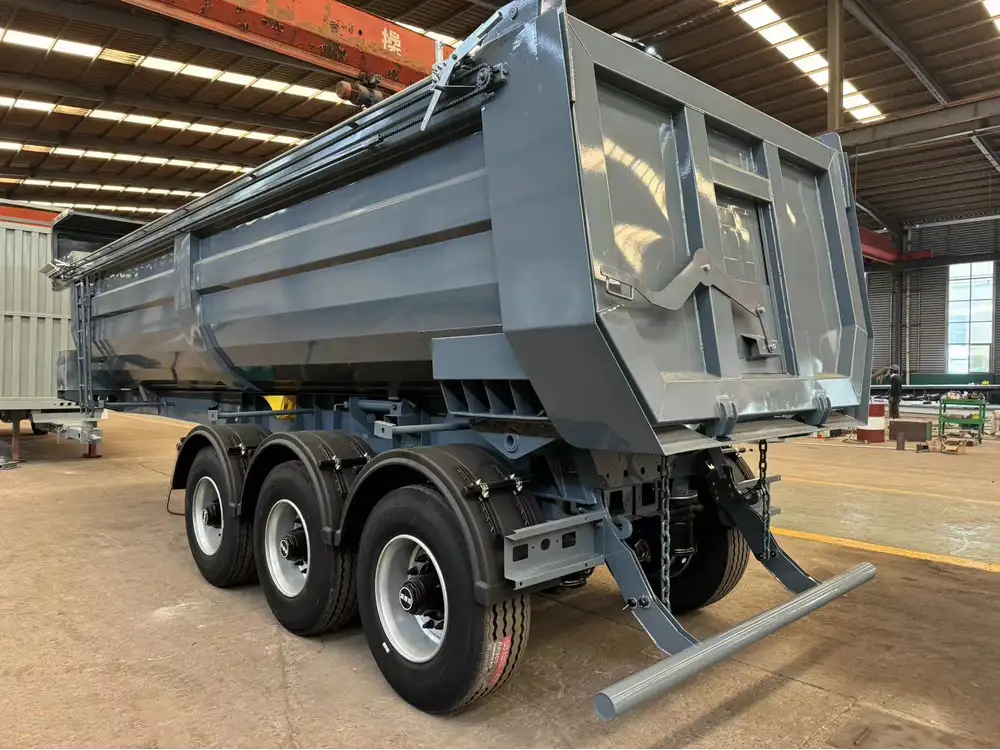
Applications of Dump Trailers
Dump trailers serve a myriad of functions across different sectors, demonstrating their versatility:
1. Construction
In construction, dump trailers streamline the process of transporting heavy materials from one site to another. They are invaluable for moving gravel, asphalt, and other construction aggregates.
2. Mining and Quarrying
Dump trailers are at the forefront of mining operations, aiding in the logistics necessary for moving ore from quarries. Their robustness and capacity make them suitable for demanding conditions.
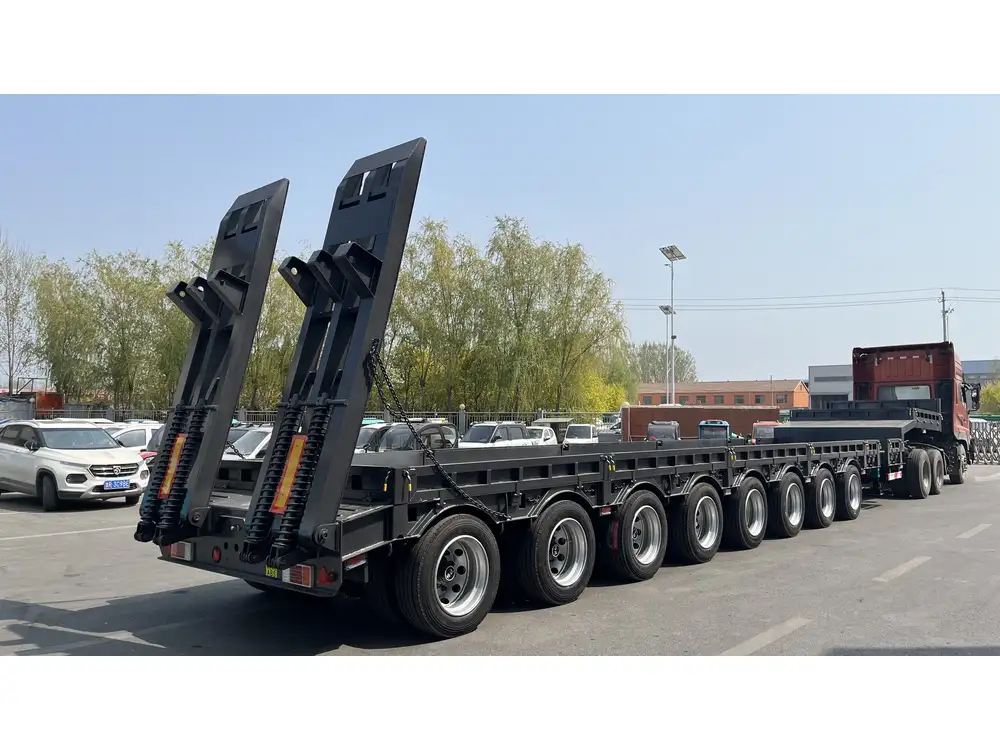
3. Agriculture
In agricultural applications, dump trailers can transport bulk materials like fertilizer and feed supplements, simplifying the logistics of large-scale farming.
4. Landscaping
For landscaping projects, dump trailers offer efficiency in transporting soil, mulch, and decorative stones, enhancing productivity and reducing labor costs.
Advantages of Utilizing Dump Trailers

Enhanced Efficiency
Dump trailers significantly improve efficiency on job sites. Their ability to unload quickly allows for faster turnaround, which is crucial in time-sensitive projects.
High Load Capacity
With their substantial load capacity, dump trailers can handle heavy loads that smaller vehicles cannot manage. This contributes to fewer trips and lower transportation costs.
Versatility in Applications
From construction to agriculture, dump trailers cater to diverse sectors, making them a worthy investment for businesses.

Safety Features
Modern dump trailers come equipped with advanced braking systems and stability features, enhancing safety during transport and unloading.
Choosing the Right Dump Trailer
Selecting the appropriate dump trailer involves several considerations:
1. Load Requirements
Understanding the types and weights of materials you will be transporting is crucial. Dump trailers come in varying sizes and capacities, so choose one that aligns with your specific needs.
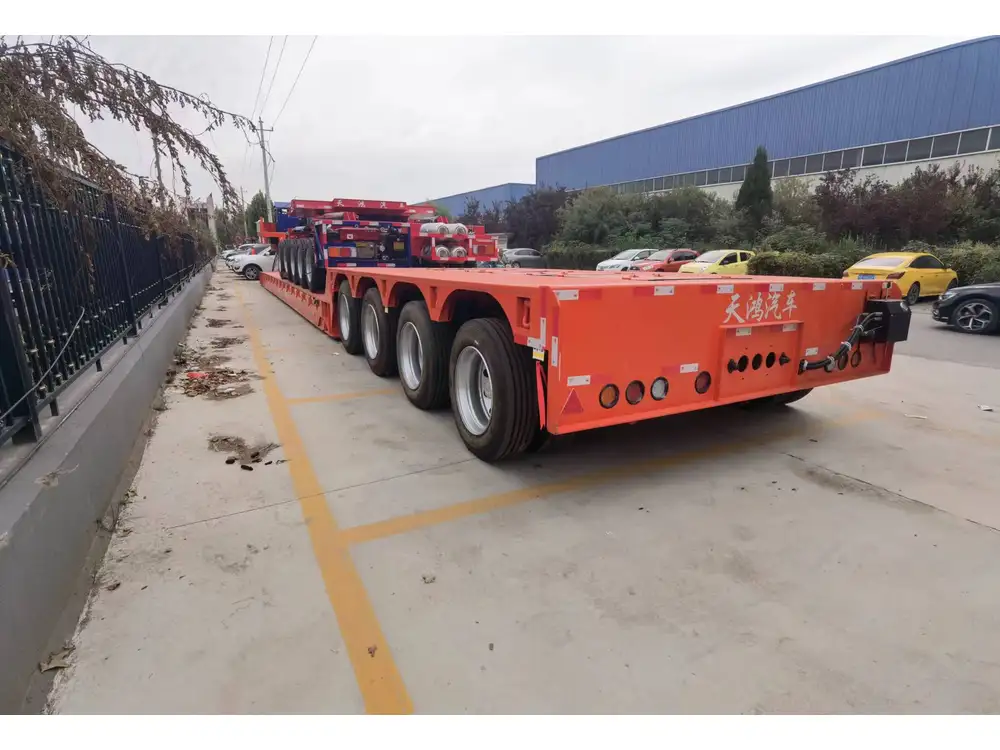
2. Intended Use
Consider the environment where the dump trailer will be used. For construction sites with space constraints, an end dump trailer may be more suitable.
3. Towing Vehicle Compatibility
Ensure that the truck or vehicle you plan to use is compatible with the dump trailer. Factors include towing capacity, hitch type, and braking systems.
4. Maintenance Needs
Evaluate the maintenance requirements of different models. Some dump trailers may require more frequent servicing, affecting long-term costs.
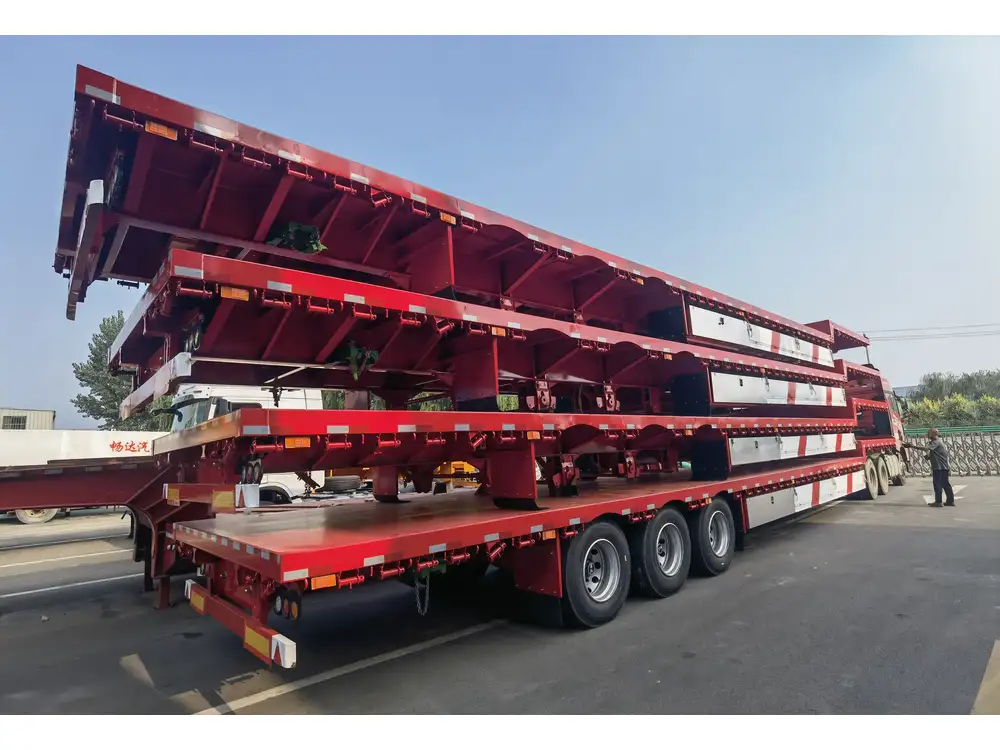
Common Problems and Solutions
Problem 1: Hydraulic System Failure
Signs: Inability to lift the trailer bed or slow reactions.
Solution: Regularly check hydraulic fluid levels and inspect for leaks. Replace worn hydraulic hoses and ensure the hydraulic pump is functioning correctly.
Problem 2: Trailer Stability Issues
Signs: Wobbling during transport or when unloading.
Solution: Verify that the load is evenly distributed. Inspect tire pressures and ensure that all axles are in good condition for optimal stability.

Problem 3: Brake Malfunctions
Signs: Difficulty in stopping or longer stopping distances.
Solution: Schedule regular brake checks. If using air brakes, ensure that the compressor is operational and not cycling too frequently.
FAQs About Dump Trailers
What is the lifespan of a dump trailer?
Typically, a well-maintained dump trailer can last between 10 to 15 years. However, this lifespan can vary based on usage frequency and maintenance.

Can you haul more than the rated capacity?
No, hauling more than the rated capacity can result in serious damage to the trailer and towing vehicle, along with increased safety risks.
What licensing is required to operate a dump trailer?
Licensing requirements vary by region. Often, you will need a commercial driver’s license (CDL) if the combined weight of the towing vehicle and trailer exceeds a certain limit.
How do you maintain a dump trailer?
Regular inspections, cleaning the trailer after use, checking hydraulic systems, and ensuring the brakes and tires are in good condition are all essential for maintenance.
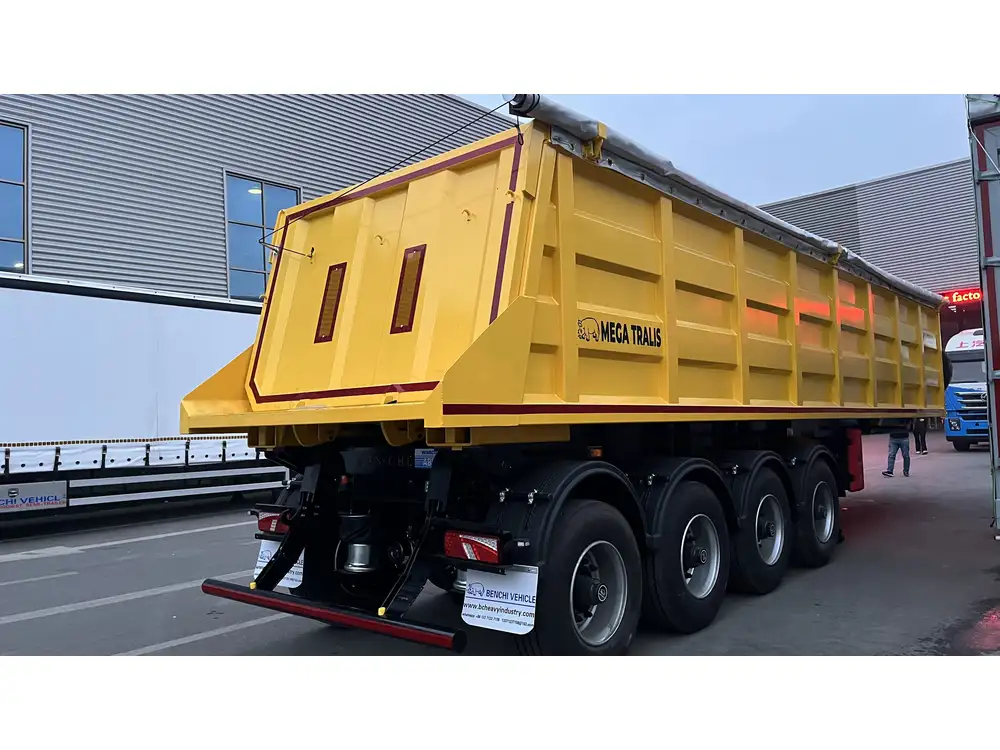
Conclusion
Understanding what the back trailer of a dump truck is, often referred to as a dump trailer, allows for a deeper appreciation of its critical role across various industries. Whether for construction, mining, agriculture, or landscaping, these trailers enhance efficiency, safety, and functionality. With careful consideration of type, maintenance, and operational needs, businesses can maximize their investment in dump trailers, ensuring a sustainable and productive operation. Engaging with these robust vehicles not only simplifies transportation logistics but also amplifies the effectiveness of every project undertaken, marking their significance in modern heavy-duty transport.



